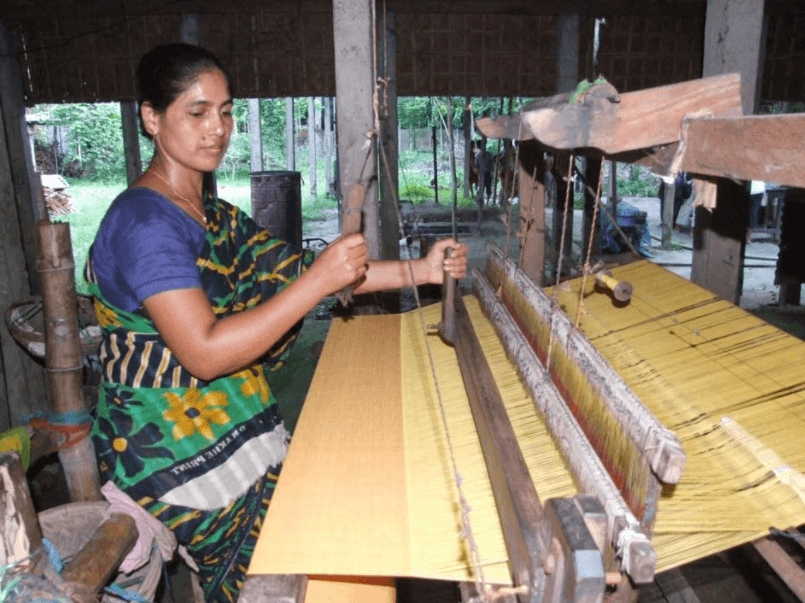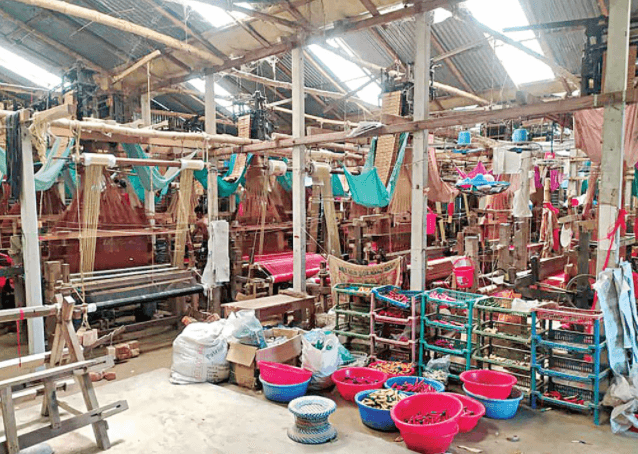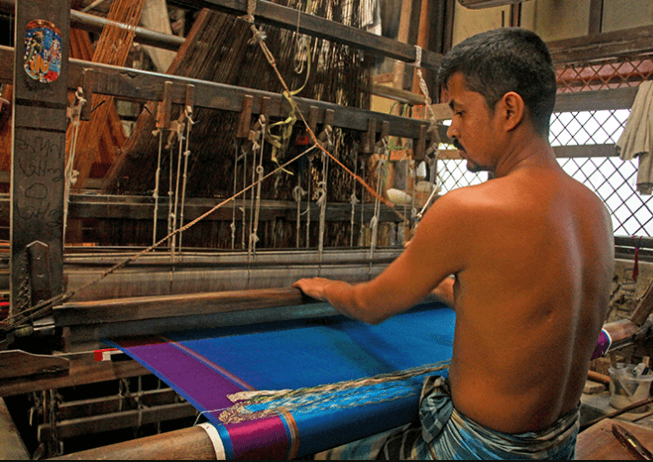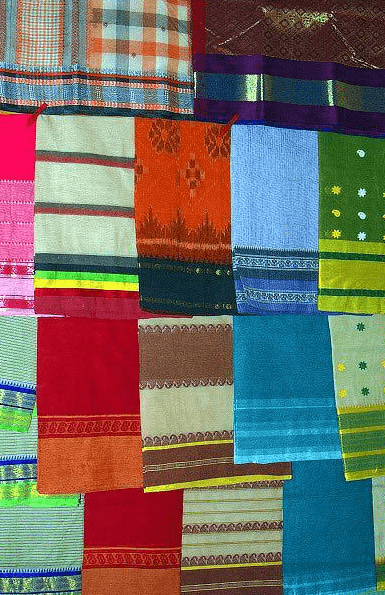
Industry, which flourished during the Mughal-Sultanate period, lost its golden chapter during the colonial period and is now on the verge of extinction. Tangail, the largest district in the Dhaka division, has been visited several times before to see historical and natural monuments. This time the purpose of going was different, to go as close as possible to the weaving industry to buy a sari. Just as Tangail district has many glorious traditions, a large part of the district has a rich tradition of weaving.
The weaving industry is like a maze
The thing seemed like a maze to me, not going through the main road to Tangail town, just across the road from Pakulla to Madarkol-Delduar, Pathrail Bazaar, Pathrail is called the capital of Tangail, basically, the biggest weaver’s sari market is here, also Kortia Belta Alokdia Lots of weavers.
To know or understand the state of the weaving industry in Tangail, one only has to go through the rocky outcrops. At first, I thought there was a foggy issue with the weaving industry. Asking someone about a weaver or a weaver’s house shows a tiled shop, but after a lot of searching, no one directly involved in the weaving industry can be found here.

We first went to Pathrail, did a lot of searching but did not find any loom factory or weaver, from there we found out that there is a loom factory of a friend’s brother in a village called Belta, the place is also known as Porabari, the splendor of the famous Porabari of Tangail is found here.
Belta village
When I went to Belta village, I saw a strange loom, wherever I looked, there was a loom, somewhere the sound of machines, somewhere the yarn was being dyed, weaving in every house, but this loom is not a familiar loom to us, here all are electric looms, there are two types of looms.
Seeing the power looms scattered from house to house in Belta, it became clear to us that we have to look for weavers in the village, not in the market, after wandering around in Belata for a while, buying saris, chatting with weavers, we came back to Pathrail. As I entered the village, I saw a situation like a belt, but there are many handlooms besides power looms, handloom sarees are good and the price is a little higher.

Social inequality in weaving
The price of a sari in a weaver’s house or factory is very low, the social inequality between the weavers and the weavers is well understood by visiting any weaver’s house. Where the weaver’s tin house is leaking, the water is pouring down when it rains, and they are moving away from the industry due to scarcity, the showrooms of the big tiled sari on the side of the road are getting bigger day by day.
A handloom sari from our acquaintance Arang priced at Rs 4,000-5,000 can be bought from a weaver’s house here for maybe Rs 1,500. It takes three to four days to make a handloom sari, excluding the cost of yarn, the cost of weaving, the cost of weaving, I don’t know how much they actually deserve and how much they get, I couldn’t do this calculation.

The impact of this ongoing epidemic has been greater than the damage done to our weaving industry in recent years by these big traders. As much as there was income, maybe I could have survived on food. But the Setuku road has also been closed for the past three months, so many are forced to change their livelihoods.
There are organizations involved in the weaving industry here, these organizations are created for the benefit of the weavers, I do not know if any organization or organization works in the interest of the weavers, and even if they do, there may be a thousand questions about what they do. However, one thing can be said, if we continue in the way it is going on, our native tradition of weaving will be destroyed very soon.
Read More: How To Go To Tangail
